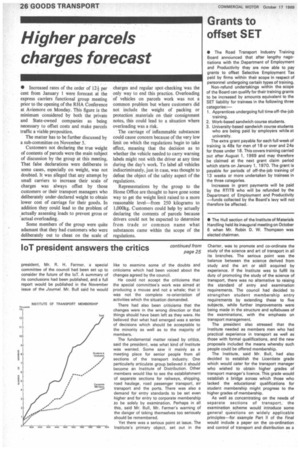Higher parcels charges forecast
Page 28

If you've noticed an error in this article please click here to report it so we can fix it.
• Increased rates of the order of 12+ per cent from January 1 were forecast at the express carriers functional group meeting prior to the opening of the RHA Conference at Aviemore on Monday. This figure is the minimum considered by both the private and State-owned companies as being necessary to offset costs and make parcels traffic a viable proposition.
The matter has to be further discussed by a sub-committee on November 5.
Customers not declaring the true weight of contents of parcels were the main subject of discussion by the group at this meeting. That false declarations were deliberate in some cases, especially on weight, was not doubted. It was alleged that any attempt by small carriers to increase their scale of charges was always offset by those customers or their transport managers who deliberately under-declared weight to obtain lower cost of carriage for their goods. In addition they could lead to the problem of actually assessing loads to prevent gross or actual overloading.
Some members of the group were quite adamant that they had customers who were deliberately out to cheat on the scale of charges and regular spot-checking was the only way to end this practice. Overloading of vehicles on parcels work was not a common problem but where customers did not include the weight of packing or protection materials on their consignment notes, this could lead to a situation where overloading was a risk.
The carriage of inflammable substances could cause concern because of the very low limit on which the regulations begin to take effect, meaning that the decision as to whether the vehicle needed to carry warning labels might rest with the driver at any time during the day's work. To label all vehicles indiscriminately, just in case, was thought to defeat the object of the safety aspect of the regulations.
Representations by the group to the Home Office are thought to have gone some way to get the weight limit raised to a more reasonable level—from 250 kilograms to 1,000kg. Customers could help by actually declaring the contents of parcels because drivers could not be expected to determine from trade or common name what substances came within the scope of the regulations.




























































































































